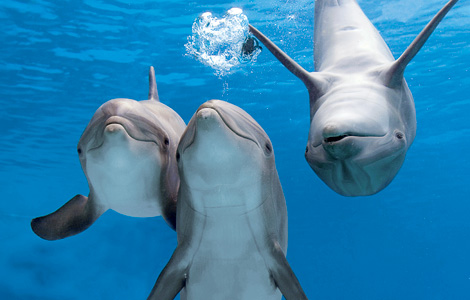... and very soon, it will be
5/4/2013 the date for this year's ImagineRIT !
Syncopated Surfing Ring + A Pod Calypso is an immersive multimedia production that invites audience members to become "interactors" in playful performances of rhythm and balance routines. Participants can opt to portray either a "syncopated surfing ringer" or "dolphin impersonificationist," where, through the use of novel interfaces and motion capture devices, they control avatars within a virtual aquatic environment. This atypical tropical troupe attempts to reach new depths of intelligent human-cetacean communication via the generation of musical, motional, and mathematical patterns.
come make
waves of interaction between
light, wind, water, dolphins and surfers







